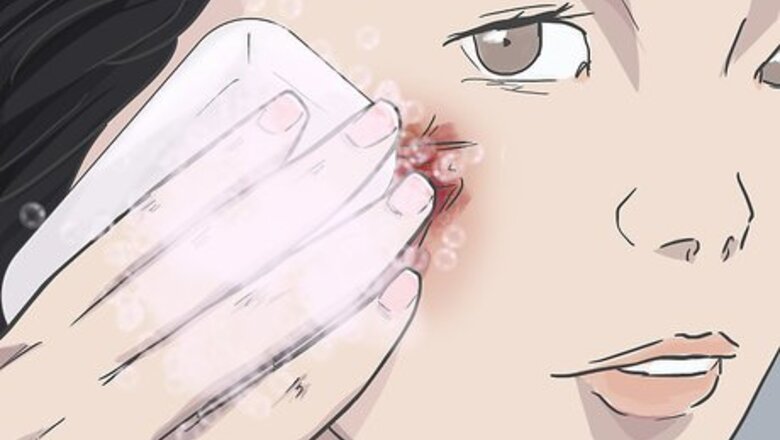
views
X
Trustworthy Source
American Academy of Dermatology
Professional organization made of over 20,000 certified dermatologists
Go to source
And if it does leave a bit of a scar, there are luckily some over-the-counter remedies and procedures available that may help even more!
Caring for Your Facial Wound
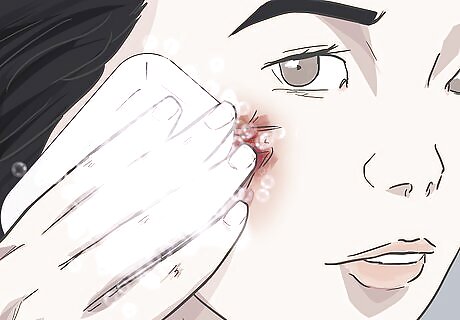
Wash the cut, scrape or other injury with mild soap. Keeping a facial cut or scrape clean is essential to proper healing. Wash new wounds as soon as you can and then wash it 2-3 times daily with a mild, unscented soap to keep it clean. Washing a wound properly is paramount to healing and preventing scarring.
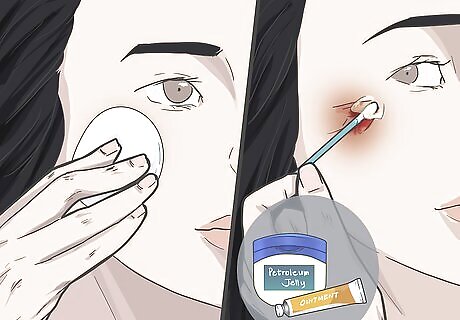
Pat and press the wound dry before applying a moisturizing ointment. Use a clean cloth or cotton pad to pat the wound dry. Apply a little pressure to the wound to stop or lessen any bleeding. Use dry, clean fingers or a sterile q-tip to apply a moisturizing ointment (like Petroleum jelly) to the wound. You may be tempted to go buy an over-the-counter ointment, but petroleum jelly has been shown to be just as effective in treating shallow, non-infected cuts and scrapes. You should be careful with antiseptic ointments, because they give some people rashes. Don’t pour iodine or hydrogen peroxide on the wound because these aren’t good for your skin and can delay the healing process.
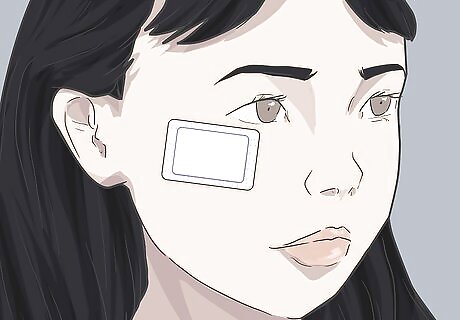
Cover bleeding wounds with an adhesive bandage after moisturizing. If your wound is relatively shallow but still bleeding after pressing it for a minute or two, cover it with a regular bandage after moisturizing to ensure that the cream gets fully absorbed and is protected. Change the bandage each time you wash the wound and apply ointment (at least twice a day). If your wound is shallow and stops bleeding after a few minutes of pressing, there’s no need to apply a bandage after moisturizing.
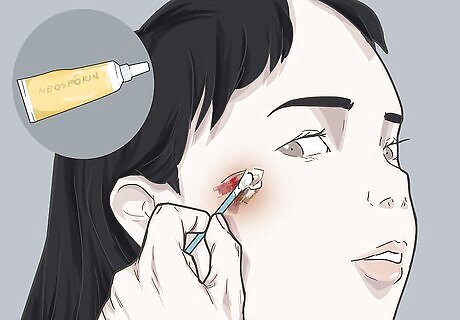
Apply topical antibiotics to the area for deep or postoperative wounds. If you went to the emergency room or urgent care, your doctor will likely give you a prescription cream like silver sulfadiazine. They also might recommend Neosporin or another over-the-counter ointment that contains bacitracin zinc. Make sure to follow your doctor’s instructions and read the directions on the packaging. Be cautious with Neosporin because some people develop a rash to it. If you had to get stitches on your facial wound, follow up with your doctor on a regular basis to find out how you might need to change your care routine during the healing process.
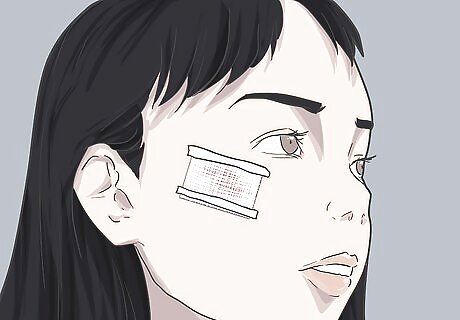
Cover the wound with cotton gauze and secure it with tape. Cotton gauze or Telfa (fabric dressing), will keep the wound moist and promote healing. Use surgical tape or tough cloth tape to secure the gauze over the wound. Both gauze and medical tape can be purchased over the counter, but your doctor may give you a roll to take home with you after your appointment. If you’re wrapping the gauze around the top of your head (for an injury on your forehead), make sure the gauze is firmly in place without being too loose or too tight.
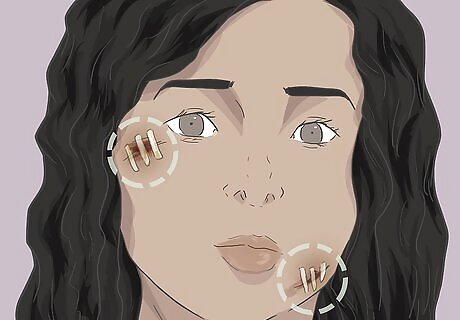
Leave steri-strips on for two weeks. If your doctor put steri-strips on your wound, don’t tug or rub the strips, because leaving them in place helps healing and reduces scar formation. You can wash and shower with the steri-strips still on. You should wash the area gently with mild soap and pat dry. The strips will fall off on their own after 1-2 weeks. After 2 weeks, carefully remove the remaining steri-strips from your face. Always wash your hands before dealing with your wound.
Using Natural and OTC Remedies
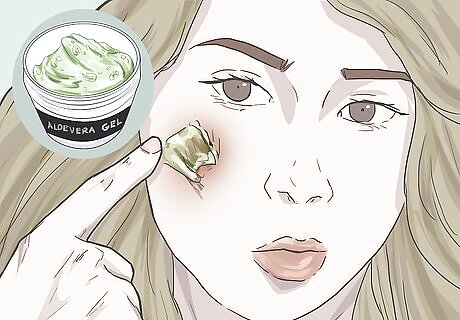
Slather the wound in aloe vera gel after washing to improve healing. Aloe vera can ease inflammation and prevent blood from clotting in the area (which causes discoloration). Use a pea-sized amount for small wounds and a dime-sized amount for larger wounds. Be sure to wash your hands with antibacterial soap and water before touching the wound with our fingers.
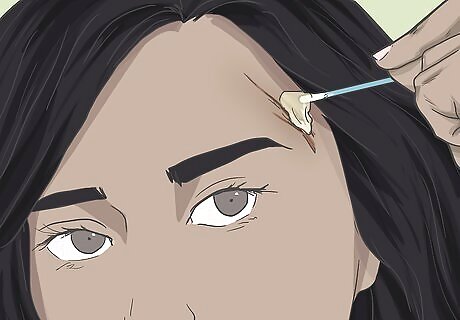
Dab minor wounds with petroleum jelly after cleaning. Use a clean finger or q-tip to apply petroleum jelly. Petroleum jelly contains tons of moisturizing oils that will keep the wound from drying out and forming a scab (which will usually lead to a scar). Petroleum jelly will also help treat any itchiness in the area.
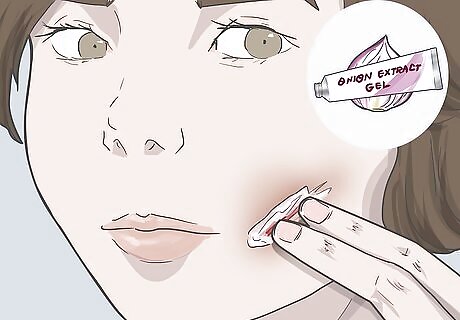
Apply onion extract to improve redness and texture of new scars. Onion extract contains several bioflavonoids that have been shown to decrease scarring. Mederma is a common brand name of scar cream that contains onion extract and is safe to use on your face. Apply it once daily (for four weeks) with sterile fingers or cotton pad. Mederma also contains aloe vera leaf extract to ease inflammation. You can purchase onion extract (and creams containing onion extract) from online vendors like Amazon and InHouse Pharmacy.vu or from pharmacies like Walgreens, CVS, RiteAid, Target, and Walmart.
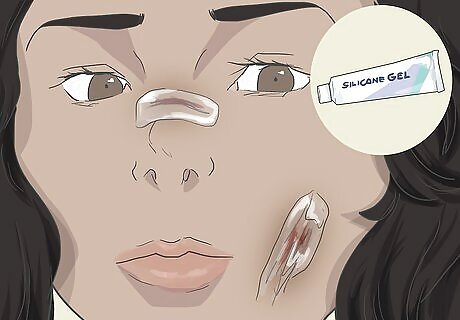
Use silicone gel to lessen discoloration, even texture, and flatten bumps. When using silicone gel, you have to wear it at least 12 hours a day, for 2-3 months of longer for it to work best. Silicone hydrates the area and tells your skin to stop producing collagen in overabundance (the buildup of which causes scars and elevation of scar tissue). You can also use silicone patches or dressings to wrap, protect, and heal the wound. Popular over-the-counter brand names include Scaraway and Dermatix. Silicone gel, patches, or wraps will also make scars itch less while protecting it from bacteria.
Minimizing Scarring
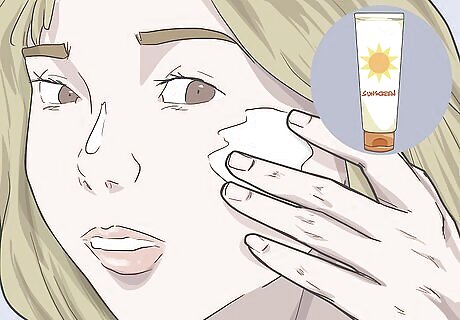
Protect your skin with sunscreen to minimize discoloration. Exposure to sun can cause newly healed wounds to take on red or brownish color. Apply SPF 30 (UVA and UVB protective) about 15 minutes before sun exposure, reapplying it after getting wet via swimming or sweating.
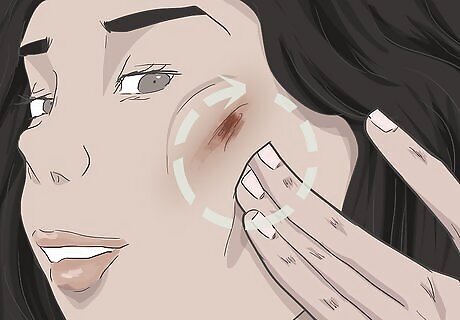
Massage the scar to break up any scar tissue. Scar tissue forms beneath the wound and is basically made up of clumps of collagen. Massage it very gently in a circular motion for a minute or so just a few times a day to break up some of those clumps. It might feel gross or weird at first, but it will help the new skin that grew up get back some of that collagen and prevent discoloration.
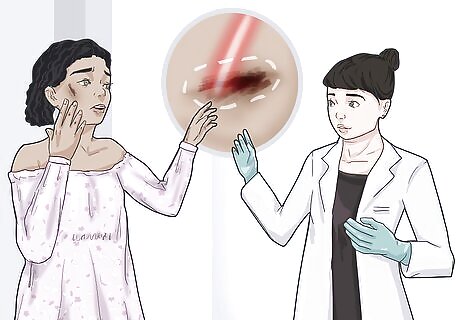
Ask your dermatologist about scar-removal procedures. Laser treatments use high-energy light to burn away skin discoloration and scar defects. Ask your dermatologist what your options are in regards to laser scar removal. If you have acne scars, this is a common method of treating them, particularly if they are sunken in or bumpy. Dermabrasion is another method of reducing scars that involves using a quick-spinning abrasive tool to take off the top layers of skin. It will leave your skin smooth and reduce the height of protruding scars. Your doctor can also inspect your particular scar and recommend a particular serum best suited for your needs.


















Comments
0 comment